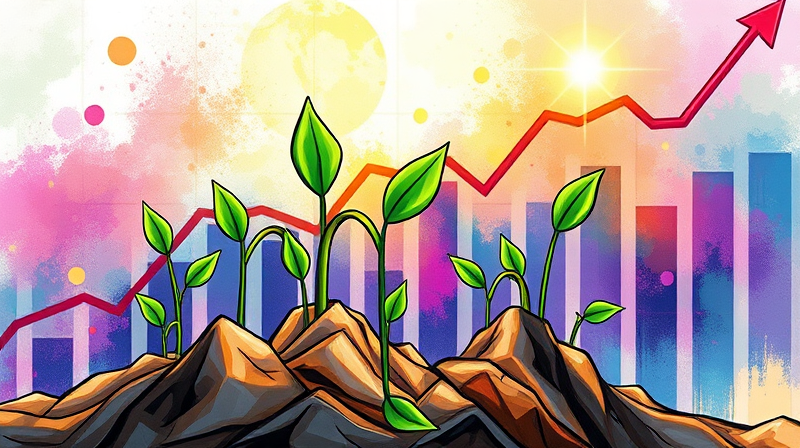
In an era of relentless transformation, investors are looking beyond traditional market cycles to uncover opportunities fueled by pervasive, long-term shifts in technology, demographics, and global policy. Megatrends—powerful, long term transformative forces—reshape entire industries, driving sustainable growth for companies at the forefront. From artificial intelligence to renewable energy, these sweeping dynamics create windows of opportunity for growth-oriented portfolios. By targeting stocks that align with fundamental shifts rather than short-lived market fads, investors can build robust portfolios poised to thrive in 2025 and beyond. This article explores how to identify, evaluate, and capitalize on growth stocks propelled by enduring trends, offering a roadmap for strategic decision-making.
As we approach the mid-2020s, the investment landscape is defined by seismic changes. The United States plans to allocate US defense spending projected to exceed $1 trillion to defense in 2025, reflecting heightened geopolitical tensions and security demands. Globally, over 50 active armed conflicts amplify demand for advanced surveillance and command-and-control solutions. At the same time, the "Magnificent Seven" tech giants hold a historic share of global market cap, symbolizing the winner-take-all dynamic. Renewable energy deployment is accelerating, driven by surging demand for renewable energy and policy support. Meanwhile, an aging population in developed economies reshapes healthcare spending, with billions allocated to telemedicine, biotechnology, and senior living assets.
While market cycles ebb and flow, megatrends persist over decades, reshaping consumer behavior, regulatory environments, and corporate strategies. Recognizing the distinction between cyclical fluctuations and structural tailwinds is essential for long-term success. Investors who focus on secular growth drivers—such as the proliferation of artificial intelligence, demographic transitions, and the transition to a low-carbon economy—position themselves to capture outsized returns. These themes cross traditional sector boundaries, leading to interconnected opportunities. For instance, the electric vehicle revolution depends on battery technology, which in turn relies on semiconductor innovation and sustainable mining practices. By developing a thematic framework, investors can systematically track emerging leaders, measure their progress, and adapt portfolios as trends mature and intersect.
In 2025, the global economy is at a pivotal juncture. US defense spending projected to exceed $1 trillion will fuel growth in aerospace, cybersecurity, and missile systems, as nations invest heavily in security infrastructure. Over 50 active armed conflicts underscore the urgency for advanced surveillance and homeland defense solutions. Meanwhile, high-performance chips and cloud infrastructure underpin rapid advancements in AI, robotics, and data analytics. Renewable energy capacity is set to double in many regions by the end of the decade, driven by technological breakthroughs and supportive policies. Demographic shifts in aging societies are reshaping healthcare spending, with billions directed toward telemedicine, life sciences, and senior living assets. These data points illustrate the scale and breadth of opportunity.
Five dominant forces are reshaping industries and driving the next wave of growth stocks. Understanding their scope and implications allows investors to pinpoint companies with sustainable competitive advantages. These megatrends not only create individual market leaders but also foster ecosystems of innovation, collaboration, and value creation. Below is a summary of the key themes defining the investment landscape.
These themes often converge in single companies or sectors, amplifying growth potential. For example, semiconductor firms benefit from both AI integration and digital infrastructure expansion, while renewable energy companies leverage advancements in automation and data analytics. Defense contractors are harnessing AI to develop autonomous systems, and healthcare innovators are fusing biotech with digital health platforms to meet the needs of an aging population. By focusing on businesses at the intersection of multiple megatrends, investors can enhance diversification while targeting superior growth trajectories. This multifaceted approach helps in identifying future market leaders whose products and services address several structural tailwinds simultaneously.
Growth stocks aligned with megatrends exhibit a set of distinguishing characteristics. High revenue and earnings growth, significant R&D investment, and leadership in addressable markets are common hallmarks. Tracking metrics such as revenue growth rates, market share expansion, and weighted alpha provides quantitative validation of momentum. Tools like thematic ETFs, proprietary watchlists, and market screeners with customizable filters can streamline the selection process. Investors should also monitor earnings guidance, analyst revisions, and regulatory developments to assess risk. Integrating qualitative analysis—such as management expertise, patent portfolios, and strategic partnerships—with quantitative data ensures a comprehensive evaluation of potential winners.
By systematically tracking these indicators, investors can differentiate between transient winners and companies with sustainable competitive moats. This disciplined approach minimizes emotion-driven decisions and aligns portfolio allocations with enduring growth drivers.
Constructing a balanced portfolio requires blending high-conviction growth positions with stable, income-generating assets to mitigate downside risk. Allocating a portion to thematic ETFs or funds provides diversified exposure to megatrends while reducing single-stock volatility. By prioritizing a strategy that emphasizes growth exposure balanced with stable assets, investors can better navigate market swings. Incorporating private credit or infrastructure investments can further smooth returns and offer access to long-term growth outside public markets. Regular rebalancing—ideally quarterly—ensures that overweight positions do not overwhelm the portfolio, while underperforming assets are reviewed for potential replacement. Investors must also consider duration risk, regional diversification, and regulatory uncertainties, especially in sectors like energy, technology, and healthcare. A robust risk management framework fosters resilience across market cycles.
While public equities offer liquidity and transparent valuations, private markets can unlock access to early-stage innovators and infrastructure projects tied to megatrends. Private equity and secondaries have gained traction as investors seek secular growth insulated from public market volatility. Direct investments in energy infrastructure, data centers, or life sciences startups can yield attractive risk-adjusted returns, albeit with longer lock-up horizons. Combining both public and private allocations allows investors to participate in high-growth opportunities across the capital structure. Due diligence frameworks, including market sizing, competitive analysis, and management assessment, are critical for evaluating private deals and ensuring alignment with portfolio objectives.
As megatrends continue to evolve and intersect, staying informed and adaptive is paramount. Regularly monitoring custom watchlists, sector rankers, and thematic screeners ensures that portfolios remain aligned with prevailing structural shifts. Embracing a disciplined, data-driven approach—anchored by both qualitative insights and quantitative metrics—empowers investors to capitalize on the transformative forces shaping our world. By combining thoughtful stock selection, prudent risk management, and a balanced allocation across public and private markets, one can position for long-term success amid the dynamic investment landscape of 2025 and beyond.
References













